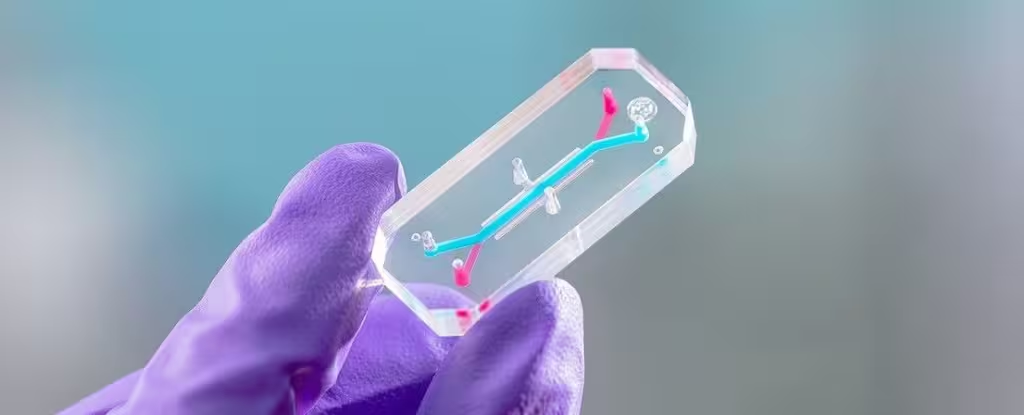6 Minutes
NASA's AVATAR: Sending Human Tissue to Test Space Health
When NASA prepares to send astronauts around the Moon on the Artemis II mission, researchers will also send tiny, personalized tissue models designed to experience the same hazards as their human donors. Known as the AVATAR project (A Virtual Astronaut Tissue Analog Response), these organ-on-a-chip devices are the size of a USB drive and will carry living bone marrow models derived from each crewmember. The experiment aims to reveal molecular and cellular changes induced by deep space conditions and accelerate the development of targeted countermeasures for human health in space.
Human physiology evolved under Earth’s gravity and magnetic protection. In deep space, crews face a suite of hazards—space radiation, isolation, limited access to medical care, microgravity, and the stresses of confined, inhospitable habitats. Together, these factors can impair bone density, cardiovascular function, immune resilience, vision, and other systems. The AVATAR approach places tissue surrogates next to the astronauts themselves, enabling side-by-side comparisons between the donors’ systemic responses and the molecular-level responses of their tissues.
Scientific Context and Rationale
Organ-on-a-chip technology recreates key features of human tissues in compact microfluidic devices. These chips support living cells in architectures that mimic organ structure and function, allowing researchers to measure responses to environmental stressors without exposing whole humans to unnecessary risk. For spaceflight, organ-on-a-chip devices can be exposed to cosmic radiation, altered circadian cues, and microgravity analogs to predict outcomes for the donor astronaut.

NASA’s Human Research Program has identified five core hazards of spaceflight: exposure to space radiation, isolation, distance from quick medical support, microgravity (and altered loads on tissues), and living in closed, sometimes noisy and malodorous environments. Each of these can trigger distinct molecular pathways—DNA damage from high-energy particles, immune dysregulation from stress and sleep disruption, and altered gene expression from mechanical unloading of bones and muscles. AVATARs give researchers a way to observe these pathways in tissue samples that carry the genetic background of the mission crew.
Mission Details: AVATAR on Artemis II
For Artemis II, AVATAR will deploy personalized bone marrow models made from each astronaut’s cells. These chips will travel inside the Orion spacecraft as a dedicated payload and will be exposed to the same environmental conditions as the crew during transit around the Moon. By comparing chip-derived molecular readouts—such as changes in immune cell production or markers of DNA damage—with clinical measures taken directly from the astronauts (blood panels, cognitive tests, activity and light exposure logs), researchers can correlate molecular signatures to physiological outcomes.
What the experiment will measure
- Immune cell function and production in bone marrow-derived tissues
- Biomarkers of radiation-induced DNA damage and repair
- Cellular stress responses related to altered circadian rhythms
- Molecular indicators that can inform real-time countermeasures
This approach is intentionally personalized. Each AVATAR contains cells from the same individual whose systemic health will be monitored during flight. That pairing enables a powerful comparison: does the tissue surrogate exhibit the same vulnerability (or resilience) as its donor? If so, AVATARs could be used in advance to screen for individual susceptibilities and to evaluate countermeasures tailored to a specific astronaut’s biology.
Implications for Deep Space Exploration and Earth Medicine
If AVATAR succeeds, future missions could carry banks of organ-on-a-chip devices representing multiple tissues—heart, liver, brain, or others—derived from mission crews. These chips could travel ahead of human arrivals on long-duration missions to the Moon or Mars to test how the deep space environment affects human tissues. Autonomous experiments could push tissues to extremes in a controlled, monitored way, providing early warning of hazards before live crews encounter them.
Beyond spaceflight, proving that personalized tissue avatars can be grown, preserved, and analyzed in isolation has clear terrestrial benefits. Organ-on-a-chip systems are already touted as transformative for personalized medicine—enabling drug testing on a patient’s own cells, predicting adverse reactions, and accelerating therapy development for complex diseases. AVATAR’s operational lessons—on tissue stability, miniaturized instrumentation, and remote data telemetry—could translate directly into clinic-ready platforms for precision treatment on Earth.
Expert Insight
"Putting a donor's tissue next to the astronaut provides a unique, individualized window into how deep space affects human biology," says Dr. Elena Morales, a biomedical engineer specializing in microphysiological systems. "This strategy combines the strengths of clinical monitoring and molecular biology: it lets us see not just that a problem exists, but how and why it arises at the cellular level. That information is crucial for designing targeted countermeasures for long-duration missions."
NASA officials involved with the Human Research Program frame AVATAR as part of a broader push to develop standardized physiological measures for space health. These include routine monitoring—blood pressure, heart rate, activity, sleep and light exposure, cognitive and sensorimotor tests—that help establish baselines for ‘normal’ function in microgravity. AVATAR adds a complementary molecular layer to that baseline data set.
Technological Challenges and Next Steps
Key technical hurdles remain: keeping living tissues viable during launch and transit, ensuring reliable autonomous operation of microfluidic pumps and sensors, protecting chips from launch vibration and cosmic rays, and transmitting high-fidelity molecular readouts back to Earth. Validation studies on Earth and on low-Earth orbit platforms are essential to refine protocols for sampling, preservation, and data interpretation.
As AVATAR moves from a single-tissue pilot on Artemis II to multi-tissue suites on later missions, the technology will need to scale. That includes manufacturing personalized chips at mission scale, establishing protocols for tissue collection and cryopreservation, and building automated analytics that can run with limited crew intervention.
Conclusion
AVATAR represents a strategic fusion of organ-on-a-chip technology and human spaceflight research. By co-locating donor-derived tissue models with their human donors during lunar missions, NASA aims to identify molecular signatures of space stressors and to validate individualized countermeasures before crews embark on longer journeys. Success would not only improve astronaut safety for Artemis and future missions to Mars, but also advance precision medicine on Earth by demonstrating robust, miniature platforms for testing personalized therapies in austere or remote settings.
Source: sciencealert

Leave a Comment